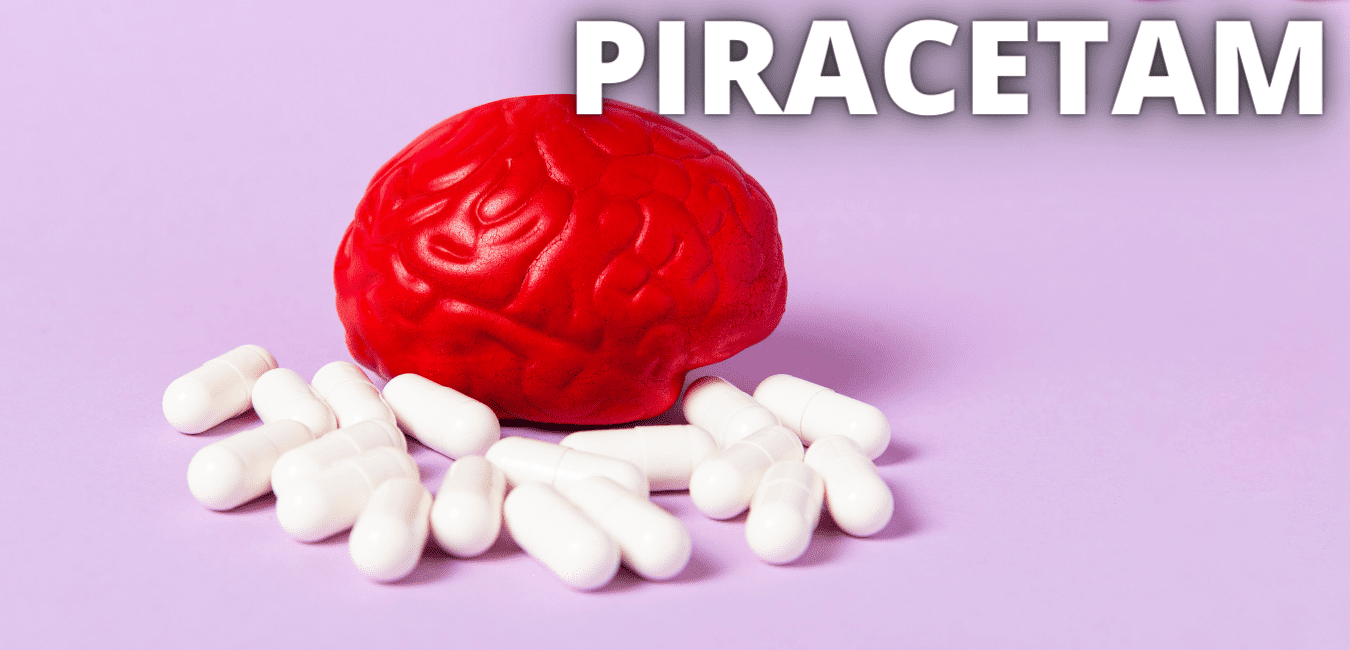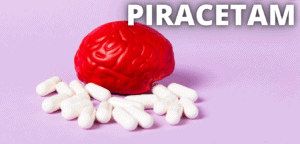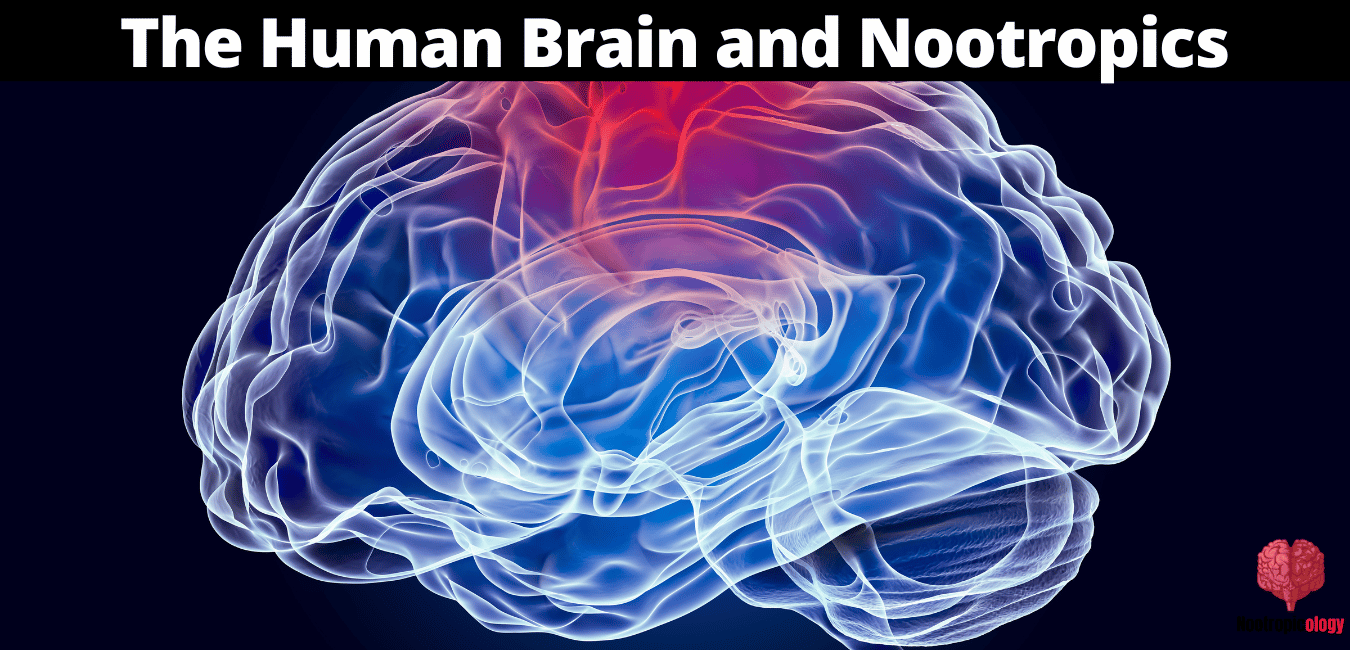
Piracetam is an ampakine nootropic in the racetam class that is a water-soluble nootropic.
Dr. Corneliu Giurgea of the Belgian pharmaceutical company UCB Pharma initially produced piracetam in 1964.
For many people, Piracetam is known as the first real nootropic to be created.
Since Piracetam is a GABA cyclic derivative, it was initially developed as an anti-motion sickness medication to help those who had motion sickness.
However, despite its link to GABA, Piracetam failed to produce any behavioral changes linked with this sedative neurotransmitter in lab rats.
A brief history of Piracetam
Dr. Giurgea, on the other hand, discovered that Piracetam may improve cognition even in persons who were otherwise healthy. In the early 1970s, the corporation marketed this new 'drug' as 'Nootropil' in Europe. UCB Pharma was able to expand quickly as a result of Nootropil's popularity, and this resulted in the development of numerous other pharmaceuticals.
The word "nootropic" was coined by Dr. Giurgea to designate this group of brain-enhancing substances.
There are nootropics because of the Greek words that mean "towards" (noos) and "mind" (tropein).
In Europe, piracetam is available by prescription under the trade names Nootropil and Lucetam. Argentina's Noostan (Piracetam) brand is sold under the trade names Noostan, Breinox, and Nootropil in South America (Mexico). It's also known as Lucetam, Oikamid, Smart Piracetam, Biotropil, and Neurobasal Piracetam, and Nocetan Piracetam Piracetam in many nations throughout the world.
Piracetam is available over-the-counter in the United States under the brand names Piracetam and Nootropil.
Since the original Piracetam was invented, dozens of racetam derivatives have been created. Racetams are a class of synthetic chemicals that all have one thing in common: a pyrrolidone nucleus.
Piracetam increases acetylcholine function in the brain through modulating AMPA receptors. The nootropic community's preferred racetam. Memory and learning enhancements are common goals for neurohackers who experiment with different dosages of Piracetam.
If you're going to begin experimenting with racetams, I suggest that you begin with Piracetam, which is available through Nootropics Expert. Because it's effective, safe, and less expensive than other racetam nootropics.
The first of the racetam family of nootropics was piracetam (2-oxo-1-pyrrolidine-acetamide, Nootropil). It's a nootropic that dissolves in water. One of your brain's three glutamate receptors is AMPA (amino-3-hydroxy-5-methyl-4-isoxazolepropionic).
It was first created by Dr. Corneliu Giurgea in 1964 at the Belgian pharmaceutical company UCB Pharma with help from prominent Russian biologist Ivan Pavlov.
Dozens of more nootropics in the racetam class have been developed since Piracetam's discovery. And at the center of all of them is a pyrrolidone nucleus.
As previously stated, piracetam is made from GABA and is a cyclic derivative. However, strangely, it has no effect on the brain's GABA receptors.
But Piracetam was discovered to improve cholinergic neurotransmission by modulating AMPA and NMDA receptors (ACh).
Learning and memory are linked to AMPA and NMDA receptors, as well as acetylcholine.
The effects of Piracetam are amplified when combined with a choline supplement. Piracetam has been proven to boost learning and memory in hundreds of clinical investigations, according to researchers.
As well as increasing blood flow to the brain, piracetam has stimulant properties. Blood carries oxygen and glucose to cells, which are critical for metabolism, as well as waste products. Crucial in the development of a brain with maximum performance potential.
There are numerous nations across the world where piracetam is available on a prescription basis.
Piracetam is an OTC research drug available over-the-counter in the United States
What is the mechanism of action of Piracetam in the brain?

Piracetam helps the brain in a number of ways. However, there are two that stick out.
Piracetam affects the brain's AMPA and NMDA receptors in a way that's both stimulating and relaxing. As well as increasing ACh receptor sensitivity and flow as well as ACh receptor density.
Piracetam increased the density of NMDA receptors in this lab investigation with mice conducted in Germany. And by using L-Glutamate, they were able to get those receptors to function like they would in a normal brain.
Deficits in NMDA receptors may be a contributing factor in cognitive impairment as people get older. Piracetam was found to have cognitive-enhancing qualities, according to the study's findings.
Our interest in employing Piracetam for Long-Term Potentiation and supporting long-term memory formation is directly tied to the effect of NMDA receptor sites on this drug.
Activation of NMDA receptors is necessary for neuroplasticity to take place.
And it's this neuroplasticity that's crucial for storing new memories. Neurohackers who use Piracetam report that it helps them recover long-forgotten memories.
Piracetam's effectiveness in supporting learning and memory has been demonstrated yet again.
When taking piracetam, your blood flow in your brain rises.
Piracetam has been proven in several trials to have a favorable impact on brain blood flow. If you want a super-charged mind, you need enough cerebral blood flow.
Blood carries oxygen and glucose to cells, which are critical for metabolism, as well as waste products.
A stoppage in the blood flow to the brain can result in a stroke. Reduce the amount of oxygen and glucose available to certain areas of the brain.
A randomized, double-blind, placebo-controlled trial including 24 stroke patients was conducted in this study. Piracetam 2,400 mg twice daily was given to one group while a placebo was given to the other.
Both groups performed similarly on language tasks before therapy. Researchers discovered that Piracetam aided the rehabilitation of a wide range of linguistic abilities.
Also, this effect was attributed to increased blood flow to parts of the brain associated with language.
There was very little gain in language skills in the people who took a sugar pill instead of the real thing.
When things go wrong
Our brain chemistry and metabolism change as we age.
And it appears that these alterations are having an increasing impact on people who are younger and younger.
- The ability to recall, react quickly, and learn new things decreases.
- Acetylcholine levels decline as we get older
- ATP levels decline
- Ampa and NMDA receptor densities are declining, which is concerning.
- The supply of blood to the brain diminishes
All of these alterations contribute to cognitive deterioration as we become older.
Poor decision-making, difficulties learning, and even remembering simple things like an important appointment are early symptoms of these impacts.
But Piracetam can help even if you're not worried about getting older.
Piracetam saves the day
As a blood flow enhancer, piracetam helps to keep mitochondria and ATP generation in brain cells healthy while also improving oxygen levels.
The AMPA-sensitive glutamate receptors in neurons are also powerfully modulated by piracetam. It raises the number of AMPA-binding sites in synapses in the brain.
The excitatory neurotransmitter glutamate dominates your brain.
Due to Piracetam's glutamate activity, it helps with alertness, concentration, focus, attention, and memory. It's for this reason, among others, that neurohackers claim Piracetam enhances mental agility and recall.
It enhances the mechanism in cholinergic nerve endings that leads to the synthesis of acetylcholine (ACh) by increasing high-affinity choline uptake (HACU). Piracetam, which increases ACh, aids learning and memory.
Piracetam also increases the density of choline receptors in the frontal brain when taken orally. Working memory and decision-making are handled by this part of the brain.
The survival of your brain depends on the availability of ATP energy.
All the ATP needed by brain cells must be made from glucose and oxygen. Carbohydrate metabolism in the brain is reliant on cerebral blood flow, oxygen uptake, and glucose intake to function properly.
Glucose consumption is improved with Piracetam, as is ATP generation, which is required to fuel the mitochondria in brain cells.
The analgesic (pain-relieving) properties of Piracetam are also well-known.
Anti-inflammatory characteristics of Piracetam are responsible for this anti-pain effect.
Studies have shown that Piracetam can significantly reduce pain by reducing inflammation.
Due to piracetam's ability to increase acetylcholine levels, you should supplement with a high-quality choline source while taking it. With Piracetam, try Alpha GPC or CDP-Choline.
Also, supplement your diet with choline to keep your brain healthy.
Does Piracetam make you feel jittery?
After around two weeks, most neurohackers report seeing results from Piracetam.
Consider the possibility that Piracetam alters the chemistry of your brain. Furthermore, this transformation is unlikely to take place right away.
Acetylcholine (ACh) levels and how the brain uses them have changed, and it will take some time for your brain to become used to that shift. It takes time for increased cerebral blood flow to raise oxygen and nutrition levels. As well as for your neurons to react.
Depending on your unique neurochemical makeup, your results may differ.
For the first three days, many recommend starting with an 'attack dose.'
For example, starting with a 3,000 mg 'attack dose' of Piracetam theoretically provides you more of the supplement right immediately. As a result, the effects begin to take effect faster after the effects have built up.
From there, reduce the dose to a maintenance level and experiment with the dosage until you discover your own personal sweet spot.
After taking Piracetam for a while, you'll probably notice that you have more energy, are less anxious in social situations, have more creative ideas, and have greater verbal fluency and memory.
The usage of acetylcholine by your brain is boosted by piracetam.
As a result, adding a quality choline source (such as Alpha GPC or CDP-Choline) to your Piracetam stack is likely to be beneficial.
What the studies say
In both animals and people with various forms of cognitive impairment, Piracetam appears to improve memory. It's important to keep in mind that the vast majority of nootropics research has been conducted on unwell patients who are attempting to get better.
Treating diseases provides a return on investment for research conducted at institutions and universities. And not by assisting common biohackers like us who are attempting to gain an advantage in the workplace or academic setting.
It is possible, however, to draw conclusions about whether or not a supplement such as Piracetam can benefit our memory and cognition based on the results of these research investigations.
Every now and then, someone runs research like this on healthy people. Such as this experiment, which was carried out on healthy individuals.
Four 400 mg Piracetam capsules were given to a healthy group of volunteers three times a day for 14 days at a dose of 4,800 mg total. After seven days of this experiment, no changes in memory had been noticed.
It took only 14 days for verbal learning to improve dramatically.
Piracetam Enhances Mental Functioning
Using data from 19 double-blind, placebo-controlled studies, researchers in Belgium (the country where Piracetam was developed) examined the effects of the supplement on patients with dementia or cognitive impairment.
People who took Piracetam as opposed to those who took a placebo showed a significant difference in the outcomes of this meta-analysis. As a result of this research, researchers now have solid proof that Piracetam can benefit a wide range of persons with cognitive impairment.
Piracetam dosage has been found to make a difference in research and user feedback. Instead of starting with a lower dose and working your way up with other nootropics, we urge you to begin with a higher advised dose while using Piracetam.
This German study of 78 elderly people found that taking Piracetam at a dose of 1,600 mg three times a day resulted in considerable improvements in cognition. Patients who got 800 mg three times daily showed no difference in cognition.
When taking Piracetam, you must pay attention to the recommended dosage.
Piracetam Boosts ATP Synthesis
Piracetam is a drug that's utilized all around the world to treat conditions including dementia and Alzheimer's. Piracetam increases ATP generation, mitochondrial membranes, and neurite outgrowth in neurons, according to numerous studies.
Scientists examined the impact of Piracetam on mitochondrial activity in this research. Piracetam was used on human brain cells in both normal and aged and damaged by ROS circumstances (reactive oxygen species). With cells that resemble Alzheimer's disease in its earliest stages, too.
Baseline tests on Alzheimer's disease cell lines revealed decreased mitochondrial function. To put it another way, Piracetam was able to reverse the cell's mitochondrial dysfunction and bring it back to normal.
In people with moderate Alzheimer's, Piracetam repaired mitochondria and restored normal cell function, according to the study's findings.
Piracetam dose is based on personal experience
Piracetam should be taken at a dosage of 1,600 mg, three times a day. You should take one dose of Piracetam in the morning, one in the early afternoon, and one towards the end of the day. Piracetam-dosage
To get the most out of Piracetam, you should start with an 'attack dose. For further information on 'attack doses,' see the section in this article under "How does Piracetam feel?"
How much Piracetam to take varies greatly among neurohackers.
Experimenting with different doses until you find the one that gives you the best results is critical.
You might be able to get away with using a smaller dose. It's possible that you'll need to up your dosage even further as a result.
The dosage of Piracetam depends on your individual neurochemistry.
Side Effects of Piracetam
Piracetam is a safe supplement to take. As a result, it's believed to be both well-tolerated and completely secure.
Because it increases the utilization of acetylcholine in your brain, Piracetam, like many other racetams, can cause headaches. In order to avoid this adverse effect, you might take supplements that include choline, such as Alpha GPC or CDP-Choline
Piracetam plus choline supplements, according to neurohackers, enhance the effects of Piracetam by improving memory and cognition. Several studies have confirmed this as well.
What Piracetam brand should I buy?
It is possible to get piracetam as a pill, a capsule, or a powder. Each tablet or capsule has 800 mg of the active ingredients.
It is possible to receive a third-party analysis of a batch of Piracetam powder before making a purchase.
There are nations in Europe, Asia, South America, and others where Piracetam is only available with a doctor's prescription. These items are available under other brand names as well (including Nootropil).
In Summary
Piracetam is an ampakine nootropic in the racetam class that is a water-soluble nootropic. It was originally developed as an anti-motion sickness medication to help those who had motion sickness.
Piracetam failed to produce behavioral changes linked with this sedative neurotransmitter in rats. Piracetam is a drug that increases blood flow to the brain. It has been proven to boost learning and memory in hundreds of clinical investigations.
Piracetam affects the brain's AMPA and NMDA receptors in a way that's both stimulating and relaxing. Piracetam has been proven to have a favorable impact on brain blood flow.
A stoppage in the blood flow to the brain can result in a stroke. Piracetam helps keep mitochondria and ATP generation in brain cells healthy. It increases acetylcholine (ACh) levels and how the brain uses them.
Most neurohackers report seeing results from taking Piracetam after around two weeks.
The usage of acetylcholine by your brain is boosted by piracetam. Adding a quality choline source (such as Alpha GPC or CDP-Choline) to your Piracetam stack is likely to be beneficial.
Piracetam dosage has been found to make a difference in research and user feedback. Piracetam increases ATP generation, mitochondrial membranes, and neurite outgrowth in neurons.
Piracetam should be taken at a dosage of 1,600 mg, three times a day. You should take one dose in the morning, one in the afternoon, and one at the end of the day.
The dosage of Piracetam depends on your individual neurochemistry.
Experimenting with different doses until you find the one that gives you the best results is critical. Piracetam, like many other racetams, can cause headaches but is generally well-tolerated and secure.
source https://nootropicology.com/piracetam/

No comments:
Post a Comment